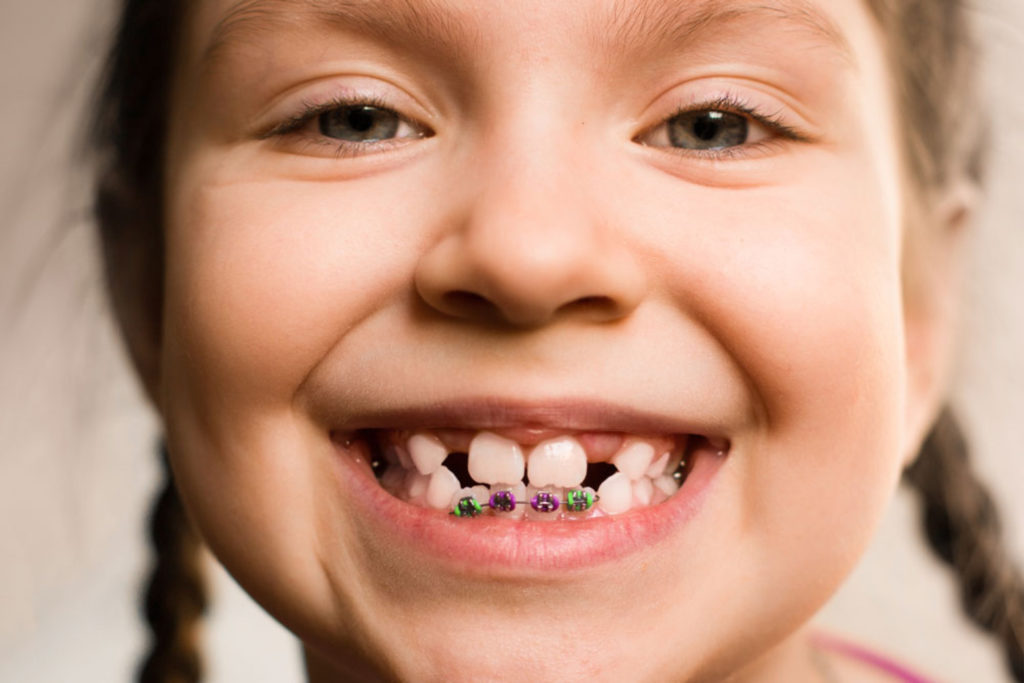Here at Seabreeze Orthodontics, we understand how worrying oral issue can be for parents. One such issue we see in our office from time to time is an older child or teenager who is missing one or more permanent teeth. Often, both patient and parents will have questions about why this has happened and what can be to done to correct it. However, a child’s jaws continue developing until they are close to adulthood, and because of this, treatment isn’t always as simple as replacing a lost permanent tooth or one that has never grown.
Do you have an older child or teen who has a missing permanent tooth? There are a number of ways that orthodontics can help you both through what can be a stressful and worrying situation. We know you want the best for your child’s oral health and smile, and we are committed to helping our patients look and feel their best! Dr. Faja-Fernandez will work side-by-side with your child’s dentist to create a customized treatment plan for their particular case, and our team will walk you through the process every step of the way. To understand more about what can keep a child’s permanent tooth from coming in, and what we can do to correct it, keep reading below!
Congenitally missing teeth
Most of us will end up with a completed set of thirty-two permanent teeth. If any of these teeth fail to fully develop, it will generally be chalked up to a case of hypodontia, or congenitally missing teeth. Hypodontia is actually one of the most common dental developmental abnormalities, with up to 20% of all adults missing at least one tooth. Hypodontia most often affects:
The wisdom teeth – these teeth are normally found all the way in the back of the mouth. Congenitally missing wisdom teeth are so common that were you to take them out of the equation, the percentage of adults with missing teeth would drop from that previously mentioned 20% figure right down to around 5%!
The second premolars – these are the teeth that reside right in front of your molars. We may sometimes remove one during braces treatment, but if your child is missing this permanent tooth, it will almost always be due to hypodontia.
Upper lateral incisors – these are the two teeth that sit on either side of your two front teeth.
Lower central incisors – these are the two front teeth in the lower jaw.
Congenitally missing teeth are much more common, and unfortunately more noticeable, in permanent teeth. Less than 1% of children will have a congenitally missing baby tooth, and of those who do, there isn’t likely to be a permanent tooth developing in the gums underneath it, either. In most cases of hypodontia, there will only be one or two teeth missing rather than multiple teeth.
What can cause a congenitally missing tooth?
The way teeth are formed in our mouths is a complex process, and there are a number of genetic signals that need to be read correctly in order to complete it successfully. Generally speaking, most cases of hypodontia will be a result of problems arising with the dental lamina. This band of tissue underneath the gums is where the tooth begins to form. There are several genetic factors that can result in the dental lamina failing to form. Most current research points to this being due to a mutation with any one of three specific genes that have a big role in the development of the teeth. If a mutation occurs that causes the dental lamina to be missing, the corresponding tooth usually will not form, either.
Congenitally missing teeth can also be associated with various medical conditions and genetic disorders, such as Down’s Syndrome.
Can anything be done about congenitally missing teeth?
Children will typically lose their last baby tooth by around the age of twelve. In most cases, the loss of a baby tooth is quickly followed by the eruption of the new permanent one. If your child loses a primary tooth and a replacement hasn’t appeared within a reasonable amount of time, you may wonder if there are any steps you should take to find out why.
The most appropriate treatment for any child missing permanent teeth can be ascertained by an examination with a qualified dentist. A dentist will be able to examine the alignment of your child’s teeth, the amount of crowding if there is any, and the bite. Because there are so many reasons for a missing permanent tooth, a thorough set of dental x-rays is often the best way to see what’s going on. There will usually be three options when a permanent tooth is missing:
- preserve the baby tooth
- replace the missing tooth
- orthodontically close the space
These methods aren’t always interchangeable. Dr. Faja-Fernandez will work with your child’s dentist to determine the best choice for them based on the condition of their teeth, their bite, the amount of crowding (if any), and several other variables.
Fortunately, there are quite a few treatment options available that can help improve the functionality of your child’s bite and the overall appearance of their smile, including:
Orthodontics
There are many ways that orthodontics can be used in conjunction with dentistry to help correct hypodontia. One example of this is orthodontic treatment creating a space in the area where a tooth should have arrived, but didn’t, particularly if another tooth has filled that gap. This can make room for an implant. Another option would be closing a space left by a missing tooth by guiding other teeth into position to close that gap. To accomplish this, we sometimes employ tooth shaping o properly fit and mimic the look of the tooth that would normally be in that spot.
Implants
Implants are the ideal solution for missing teeth. They are strong and durable, and possess cosmetic appeal as well. However, implants are only a viable treatment for your child once they’ve concluded the growth phase of adolescence. You may believe that once teens have reached a certain age, we can safely assume they’ve stopped growing and can be fitted with an implant, but every child is different. The only way to be certain of the right time for an implant is to work with an experienced dentist to determine the right time for placement.
Removable bridge
A removable bridge is a common approach to treating hypodontia. In spite of the name, it is actually a combination of a denture (because it is removable) and a bridge (because it bridges the gap between any number of missing teeth.) These bridges provide stability for the bite as well as a reasonable amount of cosmetic appeal. They are a bit similar to the removable retainers we use after braces treatment, and while they may be uncomfortable at first, they’re easy to get used to!
Traditional bridge
A traditional bridge functions in the same way as a removable bridge, but unlike its partial counterpart, it is fixed and not removable. Fixed bridges are adhered directly to the surface of the teeth opposing the gap. There are certain cases in which a traditional bridge will be preferred over a removable one, but they can be a bit more difficult to keep clean, and may also require the reduction of certain healthy portions of the adjacent teeth.
Composite bridgework
A composite bridge is essentially a compromise between a fixed bridge and a partial one. Our skilled team will shape a “replacement” tooth with bonding material, then adhere it to the surfaces of the adjacent teeth without having to remove any of the healthy tooth material from them. If an implant or other solution becomes the preferred treatment choice at a later date, this bridge can easily be removed. It has some of the same cleaning challenges as a fixed bridge, so a proper oral care routine is a crucial part of keeping it functioning as well as it should.
Set your mind at ease with Seabreeze Orthodontics
For children or teens who are dealing with a suspected (or obvious!) case of hypodontia, Seabreeze Orthodontics offers the best in personalized, compassionate care for families in Myrtle Beach and the surrounding areas. Our state-of-the-art office is fully equipped to handle diagnosing, treating, and creating a fully functional smile that works well and looks attractive. Dr. Faja-Fernandez and the rest of our talented team provide innovative treatment options that are customized for every patient we see, so get in touch with us today to schedule a free examination. We have what it takes to give your child the smile they deserve!


